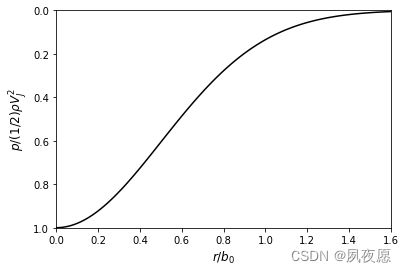- Python FastAPI 与传统 Web 框架的性能对比
Python编程之道
pythonfastapi前端ai
PythonFastAPI与传统Web框架的性能对比关键词:FastAPI、性能对比、Web框架、异步编程、Python、Django、Flask摘要:本文深入探讨了FastAPI与传统PythonWeb框架(如Django和Flask)在性能方面的差异。我们将从架构设计、请求处理模型、并发能力等多个维度进行对比分析,并通过基准测试数据展示实际性能差异。文章还将提供代码示例和性能优化建议,帮助开发
- Python Django 数据库索引优化
Python编程之道
pythondjango数据库ai
PythonDjango数据库索引优化关键词:DjangoORM、数据库索引、查询优化、性能调优、PostgreSQL、MySQL、执行计划摘要:本文深入探讨Django框架中的数据库索引优化策略。我们将从数据库索引的基本原理出发,详细分析DjangoORM如何生成SQL查询,以及如何通过合理的索引设计提升查询性能。文章包含索引类型选择、复合索引优化、Django模型字段索引配置、查询集优化技巧等
- Python Scrapy爬取办公用品网站数据的策略
Python编程之道
pythonscrapy开发语言ai
1.引入与连接想象一下,你是一家办公用品公司的市场调研人员,需要了解竞争对手的产品价格、种类等信息。如果手动去各个办公用品网站收集这些数据,那将是一项极其繁琐且耗时的工作。而Python的Scrapy框架就像是一个不知疲倦的超级助手,能帮你快速、高效地从众多网站抓取所需数据。你可能已经对Python有了一定的了解,知道它是一门功能强大且应用广泛的编程语言。Scrapy则是Python中专门用于网络
- 使用Python Scrapy打造个性化爬虫
使用PythonScrapy打造个性化爬虫——知识金字塔构建1.引入与连接:从“手动复制”到“自动化采集”的跨越你是否遇到过这样的场景?想整理1000条知乎优质回答做数据分析,却要逐条复制;想追踪某电商平台的商品价格波动,却要每天手动刷新页面……这些重复劳动,正是“个性化爬虫”的用武之地!与已有知识的连接:你可能用过requests+BeautifulSoup写过简单爬虫,但面对大规模数据、复杂反
- 新手向:基于 Python 的简易视频剪辑工具
在数字媒体时代,视频创作已成为大众表达的重要形式,从个人vlog制作到企业宣传视频,视频内容的需求呈现爆发式增长。传统专业软件如AdobePremierePro虽功能强大,提供完整的非线性编辑系统,但存在学习曲线陡峭(新手通常需要数周系统学习)、资源占用高(最低配置要求8GB内存)、授权费用昂贵(订阅价约20美元/月)等痛点。相比之下,Python凭借其丰富的多媒体库生态系统(如OpenCV、Mo
- TensorFlow GPU 2.10.1 for Python 3.9快速安装指南
疑样
本文还有配套的精品资源,点击获取简介:TensorFlowGPU2.10.1是专为Windowsx64和Python3.9设计的TensorFlow版本,它集成了GPU支持以加快深度学习模型的训练。本指南提供了该版本的概述、安装步骤及注意事项,旨在帮助开发者利用其性能优势提升机器学习项目的效率。1.TensorFlowGPU介绍1.1TensorFlow的起源与功能TensorFlow是由Goog
- 进阶向:基于Python的智能客服系统设计与实现
智能客服系统开发指南系统概述智能客服系统是人工智能领域的重要应用,它通过自然语言处理(NLP)和机器学习技术自动化处理用户查询,显著提升客户服务效率和响应速度。基于Python的实现方案因其丰富的生态系统(如NLTK、spaCy、Transformers等库)、跨平台兼容性以及易于集成的特点,成为开发智能客服系统的首选。系统架构系统核心包括两个主要功能模块:1.API集成模块负责连接各类外部服务,
- Python 数据插值:NumPy 实现多种插值方法
Python数据插值:用NumPy解锁缺失数据的秘密拼图关键词数据插值、NumPy、线性插值、多项式插值、缺失值处理、数据平滑、数值分析摘要在数据分析和科学计算中,我们经常遇到离散或缺失的观测数据——比如气象站每小时记录的温度值有缺失,或者实验中只采集了稀疏的采样点。这时候,数据插值(Interpolation)就像“数据修复师”,能根据已知点推断出未知点的数值,让离散数据变成连续的“故事”。本文
- 【Python LeetCode 专题】热题 100,重在思路
一杯水果茶!
人生苦短我用Pythonpythonleetcode
哈希1.两数之和49.字母异位词分组128.最长连续序列双指针283.移动零11.盛最多水的容器15.三数之和42.接雨水滑动窗口3.无重复字符的最长子串438.找到字符串中所有字母异位词子串560.和为K的子数组239.滑动窗口最大值普通数组53.最大子数组和56.合并区间189.轮转数组238.除自身以外数组的乘积矩阵73.矩阵置零链表160.相交链表206.反转链表234.回文链表141.环
- 自己开发FT4222上位机软件 - USB转SPI
EE工程师
嵌入式系统python单片机模块测试
写作背景 最近公司有个项目,让开发一个能够同时进行千兆网接收和SPI配置的上位机软件,开发语言不限,所以作者选择Python+PyQt作开发,做嵌入式固件开发的读者可能知道还需要一块USB转SPI的模块才能进行上下位机正常SPI读写,项目团队成员建议模块从淘宝网购买就好,作者经过调研对比,感觉从芯片质量到开发配套上来讲,FTDI的FT4222模块是最优选择。但令作者感到不快的是淘宝商家不提供模块
- 自己开发I2C Bootloader -上位机开发篇
EE工程师
嵌入式系统pythonstm32单片机
上位机脚本开发 在芯片原厂大部分工程师选择的脚本语言依然是Python,Python有哪些开发优势这里就不再讨论了,这里我们只陈述一下上位机的开发环境,作者的开发环境是VSCode+Anaconda。脚本内容也没有什么好说的,一看就懂,比较简单。唯一值得提醒的是本项目的上位机开发需要多注意*Write_DataBytes_To_Serial_Port(self,DataBytes):*函数的实现
- Grok网站的后端语言是php和Python2.7
言之。
随笔随笔
老马的Grok模型https://grok.com/#subscribephp语法这里还出现了两个bug后端语言能看到是php和python2.7要说卷还是得看中国的程序员啊,天天就是新技术,赶不上别人就35岁毕业退休
- 【python】图片批量压缩脚本
横桥码农
pythonpython
#-*-coding:utf-8-*-'''图片批量压缩脚本将脚本放入待压缩文件夹下,并运行自动生成压缩文件夹compress'''fromPILimportImageimportosimportsysimportiosys.stdout=io.TextIOWrapper(sys.stdout.buffer,encoding='utf-8')defcompress_image(input_imag
- python 中列表,元组和集合常用方法
[自由之路]
pythonpythonwindows开发语言
列表列表中可以添加不同类型的元素,如:int类型和str类型deftest_list():"""测试列表的基本操作"""var9=range(10)_var9=list(var9)#将range对象转换为列表copy_var9=_var9.copy()#复制列表_var9.append(1)#添加一个元素到列表中count=_var9.count(1)#计算1出现的次数print(f"counto
- 浅谈Python+requests+pytest接口自动化测试框架的搭建
测试界筱筱
软件测试pythonpytest数据库软件测试功能测试自动化测试程序人生
框架的设计思路首先要明确进行接口自动化需要的步骤,如下图所示:然后逐步拆解需要完成的工作:1)了解分析需求:了解接口要实现的功能2)数据准备:根据开发文档确定接口的基本情况,知晓接口的url、请求方式、入参等信息,然后根据业务逻辑以及入参来预期接口的输出需要有一个配置文件来存储接口的一些基本信息;需要有一个方法能读取配置文件;需要有一个excel或者yaml格式文件来存储测试数据;需要有一个方法能
- Excel处理控件Aspose.Cells指南:使用 Python 删除 Excel 中的重复行
CodeCraft Studio
文档管理控件pythonexcel开发语言
在Excel中删除重复行对于维护干净、准确和一致的数据集至关重要。它可以确保一致性,并有助于防止分析或报告中出现错误。重复数据会导致错误的分析和糟糕的决策。因此,识别和消除重复数据的能力对于软件开发人员、数据分析师和Excel用户来说是一项宝贵的技能。在本篇博文中,我们将向您展示如何使用Python以编程方式删除Excel工作表中的重复行。Python库用于删除Excel中的重复行Aspose.C
- Excel处理控件Aspose.Cells教程:使用 Python 在 Excel 中进行数据验
CodeCraft Studio
文档管理控件excelpython开发语言
Excel中的数据验证功能可确保用户在工作表中输入正确的数据类型。无论您是构建动态模板、收集结构化数据还是准备财务报告,添加验证都有助于避免错误并保持一致性。在本文中,我们将探讨如何使用Python在Excel中实现数据验证。让我们深入研究实际的解决方案,以自动执行Excel验证任务-而无需安装MicrosoftExcel。Aspose.Cells最新版下载Excel中的数据验证是什么?Excel
- Python脚本压缩图片大小,不损害图片质量
凉风听雪
Pythonpython开发语言
Python源码:同步绑定有exe文件,可下载直接使用importosfromPILimportImagedefcompress_images(input_folder,quality):#确定输出文件夹路径为输入路径同级的"out"output_folder=os.path.join(os.path.dirname(input_folder),"out")#确保输出文件夹存在ifnotos.pa
- 用python写一个压缩图片到指定大小的脚本
清明自在
功能测试
事情起因:本人是一名测试,单位里的测试时不时要测试上传图片的大小边界值,每次找图片都很不方便,所以我想自己写个python脚本去实现它。事情经过:经过不断百度+csdn,发现也有不少前辈有着类似的需求,也有做了类似的脚本,用的pillow库,思路是通过循环另存一张图片,如果另存后大小不符合自己的要求,就把压缩比率(参数为quality)降低再保存,思路挺好的,效果也有,但似乎不太稳定,我copy脚
- Python+requests+pytest接口自动化测试框架的搭建
天才测试猿
python自动化测试软件测试测试用例职场和发展pytest测试工具
点击文末小卡片,免费获取软件测试全套资料,资料在手,涨薪更快框架的设计思路首先要明确进行接口自动化需要的步骤,如下图所示:然后逐步拆解需要完成的工作:1)了解分析需求:了解接口要实现的功能2)数据准备:根据开发文档确定接口的基本情况,知晓接口的url、请求方式、入参等信息,然后根据业务逻辑以及入参来预期接口的输出需要有一个配置文件来存储接口的一些基本信息;需要有一个方法能读取配置文件;需要有一个e
- 从代码到终端部署:Prompt如何颠覆传统DevOps流程
LCG元
工具运维promptdevops运维
文章目录基于Prompt工程的DevOps架构重构实践一、架构演进与技术对比1.1架构演进路径1.2核心流程对比二、核心实现方案2.1Prompt解析引擎实现(Python)2.2Kubernetes集成部署(YAML模板)三、生产部署实践3.1安全增强方案3.2性能优化数据四、技术前瞻与演进4.1未来三年技术路线图五、完整技术图谱六、核心代码实现(TypeScript前端)七、部署验证测试基于P
- 解锁Prompt+DevOps新姿势:终端系统重塑的三大核心策略
文章目录引言:Prompt驱动的DevOps范式迁移核心策略一:智能决策流水线构建横向架构对比纵向实现流程Python实现示例核心策略二:自适应终端部署体系TypeScript客户端实现YAML部署配置模板核心策略三:智能运维闭环构建安全审计实现方案性能对比分析技术前瞻性分析附录:完整技术图谱技术架构部署验证引言:Prompt驱动的DevOps范式迁移在云原生与AI工程化交汇的今天,Prompt技
- 高并发解决方案:SpringBoot+Redis分布式缓存实战
fanxbl957
Web缓存springbootredis
博主介绍:Java、Python、js全栈开发“多面手”,精通多种编程语言和技术,痴迷于人工智能领域。秉持着对技术的热爱与执着,持续探索创新,愿在此分享交流和学习,与大家共进步。DeepSeek-行业融合之万象视界(附实战案例详解100+)全栈开发环境搭建运行攻略:多语言一站式指南(环境搭建+运行+调试+发布+保姆级详解)感兴趣的可以先收藏起来,希望帮助更多的人高并发解决方案:SpringBoot
- SpringBoot缓存技术全解析:Redis+Caffeine二级缓存架构
fanxbl957
Web缓存springbootredis
博主介绍:Java、Python、js全栈开发“多面手”,精通多种编程语言和技术,痴迷于人工智能领域。秉持着对技术的热爱与执着,持续探索创新,愿在此分享交流和学习,与大家共进步。DeepSeek-行业融合之万象视界(附实战案例详解100+)全栈开发环境搭建运行攻略:多语言一站式指南(环境搭建+运行+调试+发布+保姆级详解)感兴趣的可以先收藏起来,希望帮助更多的人SpringBoot缓存技术全解析:
- 后端开发:Spring Boot 的分布式缓存方案
大厂资深架构师
SpringBoot开发实战springboot分布式缓存ai
后端开发:SpringBoot的分布式缓存方案关键词:SpringBoot、分布式缓存、Redis、Caffeine、缓存策略、缓存失效摘要:本文深入探讨了在SpringBoot后端开发中分布式缓存方案的相关技术。首先介绍了分布式缓存在现代应用中的重要性及本文的研究范围,接着阐述了核心概念如分布式缓存的原理与架构,详细讲解了常用的核心算法原理及具体操作步骤,包括使用Python代码示例说明。通过数
- 上位机知识篇---Prompt&PowerShell Prompt
Atticus-Orion
上位机知识篇promptpowershell
在Anaconda环境中,AnacondaPrompt和AnacondaPowerShellPrompt是两个常用的命令行工具,它们的核心功能都是为了方便管理Python环境和执行相关命令,但底层依赖的命令行解释器不同,因此在使用场景和语法上存在一些区别。下面详细介绍两者的差异:1.底层依赖的命令行解释器不同这是两者最根本的区别,决定了它们的语法规则和功能范围:AnacondaPrompt基于Wi
- virtualenv
小小怪吃吃吃
virtualenv就是用来为一个应用创建一套“隔离”的Python运行环境。(1)用pip安装virtualenv:pip3installvirtualenv(2)创建开发项目目录:mkdirprojectcdproject/(3)创建一个独立的Python运行环境,命名为venv:virtualenv--no-site-packagesvenv命令virtualenv就可以创建一个独立的Pyt
- VSCode使用Jupyter完整指南配置机器学习环境
z日火
校招学习日记vscodejupyter机器学习
接下来开始机器学习部分第一步配置环境:VSCode使用Jupyter完整指南1.安装必要的扩展打开VSCode,按Ctrl+Shift+X打开扩展市场,搜索并安装以下扩展:必装扩展:Python(Microsoft官方)-Python语言支持Jupyter(Microsoft官方)-Jupyternotebook支持Pylance(Microsoft官方)-Python智能提示和语法检查推荐扩展:
- python虚拟环境打包_python项目打包虚拟环境
weixin_39933356
python虚拟环境打包
python项目打包时,需要将虚拟环境与python自身安装路径下的lib包整合在一起,将该文件保存为packvenv.sh,放入虚拟环境目录下,chmod+xpackvenv.sh,./packvenv.sh执行即可#!/bin/bashPYTHON_PATH=/usr/local/python2.7VENV_PATH=~/.virtualenvs/venv-linux6VENV_NAME=`b
- python连接数据库的方法,Python 连接数据库的多种方法
AI MIU
python连接数据库的方法
JZGKCHINAPython是一种计算机程序设计语言,它是一种动态的、面向对象的脚本语言。它是一种跨平台的,可以运行在Windows,Mac和Linux/Unix系统上。在日常使用中需要对大量数据进行数据分析,那么就必然用到数据库,我们常用的数据库有SQLServer,MySQL,Oracle,DB2,SQLite,Hive,PostgreSQL,MongoDB还有其他常用的MicrosoftA
- html页面js获取参数值
0624chenhong
html
1.js获取参数值js
function GetQueryString(name)
{
var reg = new RegExp("(^|&)"+ name +"=([^&]*)(&|$)");
var r = windo
- MongoDB 在多线程高并发下的问题
BigCat2013
mongodbDB高并发重复数据
最近项目用到 MongoDB , 主要是一些读取数据及改状态位的操作. 因为是结合了最近流行的 Storm进行大数据的分析处理,并将分析结果插入Vertica数据库,所以在多线程高并发的情境下, 会发现 Vertica 数据库中有部分重复的数据. 这到底是什么原因导致的呢?笔者开始也是一筹莫 展,重复去看 MongoDB 的 API , 终于有了新发现 :
com.mongodb.DB 这个类有
- c++ 用类模版实现链表(c++语言程序设计第四版示例代码)
CrazyMizzz
数据结构C++
#include<iostream>
#include<cassert>
using namespace std;
template<class T>
class Node
{
private:
Node<T> * next;
public:
T data;
- 最近情况
麦田的设计者
感慨考试生活
在五月黄梅天的岁月里,一年两次的软考又要开始了。到目前为止,我已经考了多达三次的软考,最后的结果就是通过了初级考试(程序员)。人啊,就是不满足,考了初级就希望考中级,于是,这学期我就报考了中级,明天就要考试。感觉机会不大,期待奇迹发生吧。这个学期忙于练车,写项目,反正最后是一团糟。后天还要考试科目二。这个星期真的是很艰难的一周,希望能快点度过。
- linux系统中用pkill踢出在线登录用户
被触发
linux
由于linux服务器允许多用户登录,公司很多人知道密码,工作造成一定的障碍所以需要有时踢出指定的用户
1/#who 查出当前有那些终端登录(用 w 命令更详细)
# who
root pts/0 2010-10-28 09:36 (192
- 仿QQ聊天第二版
肆无忌惮_
qq
在第一版之上的改进内容:
第一版链接:
http://479001499.iteye.com/admin/blogs/2100893
用map存起来号码对应的聊天窗口对象,解决私聊的时候所有消息发到一个窗口的问题.
增加ViewInfo类,这个是信息预览的窗口,如果是自己的信息,则可以进行编辑.
信息修改后上传至服务器再告诉所有用户,自己的窗口
- java读取配置文件
知了ing
1,java读取.properties配置文件
InputStream in;
try {
in = test.class.getClassLoader().getResourceAsStream("config/ipnetOracle.properties");//配置文件的路径
Properties p = new Properties()
- __attribute__ 你知多少?
矮蛋蛋
C++gcc
原文地址:
http://www.cnblogs.com/astwish/p/3460618.html
GNU C 的一大特色就是__attribute__ 机制。__attribute__ 可以设置函数属性(Function Attribute )、变量属性(Variable Attribute )和类型属性(Type Attribute )。
__attribute__ 书写特征是:
- jsoup使用笔记
alleni123
java爬虫JSoup
<dependency>
<groupId>org.jsoup</groupId>
<artifactId>jsoup</artifactId>
<version>1.7.3</version>
</dependency>
2014/08/28
今天遇到这种形式,
- JAVA中的集合 Collectio 和Map的简单使用及方法
百合不是茶
listmapset
List ,set ,map的使用方法和区别
java容器类类库的用途是保存对象,并将其分为两个概念:
Collection集合:一个独立的序列,这些序列都服从一条或多条规则;List必须按顺序保存元素 ,set不能重复元素;Queue按照排队规则来确定对象产生的顺序(通常与他们被插入的
- 杀LINUX的JOB进程
bijian1013
linuxunix
今天发现数据库一个JOB一直在执行,都执行了好几个小时还在执行,所以想办法给删除掉
系统环境:
ORACLE 10G
Linux操作系统
操作步骤如下:
第一步.查询出来那个job在运行,找个对应的SID字段
select * from dba_jobs_running--找到job对应的sid
&n
- Spring AOP详解
bijian1013
javaspringAOP
最近项目中遇到了以下几点需求,仔细思考之后,觉得采用AOP来解决。一方面是为了以更加灵活的方式来解决问题,另一方面是借此机会深入学习Spring AOP相关的内容。例如,以下需求不用AOP肯定也能解决,至于是否牵强附会,仁者见仁智者见智。
1.对部分函数的调用进行日志记录,用于观察特定问题在运行过程中的函数调用
- [Gson六]Gson类型适配器(TypeAdapter)
bit1129
Adapter
TypeAdapter的使用动机
Gson在序列化和反序列化时,默认情况下,是按照POJO类的字段属性名和JSON串键进行一一映射匹配,然后把JSON串的键对应的值转换成POJO相同字段对应的值,反之亦然,在这个过程中有一个JSON串Key对应的Value和对象之间如何转换(序列化/反序列化)的问题。
以Date为例,在序列化和反序列化时,Gson默认使用java.
- 【spark八十七】给定Driver Program, 如何判断哪些代码在Driver运行,哪些代码在Worker上执行
bit1129
driver
Driver Program是用户编写的提交给Spark集群执行的application,它包含两部分
作为驱动: Driver与Master、Worker协作完成application进程的启动、DAG划分、计算任务封装、计算任务分发到各个计算节点(Worker)、计算资源的分配等。
计算逻辑本身,当计算任务在Worker执行时,执行计算逻辑完成application的计算任务
- nginx 经验总结
ronin47
nginx 总结
深感nginx的强大,只学了皮毛,把学下的记录。
获取Header 信息,一般是以$http_XX(XX是小写)
获取body,通过接口,再展开,根据K取V
获取uri,以$arg_XX
&n
- 轩辕互动-1.求三个整数中第二大的数2.整型数组的平衡点
bylijinnan
数组
import java.util.ArrayList;
import java.util.Arrays;
import java.util.List;
public class ExoWeb {
public static void main(String[] args) {
ExoWeb ew=new ExoWeb();
System.out.pri
- Netty源码学习-Java-NIO-Reactor
bylijinnan
java多线程netty
Netty里面采用了NIO-based Reactor Pattern
了解这个模式对学习Netty非常有帮助
参考以下两篇文章:
http://jeewanthad.blogspot.com/2013/02/reactor-pattern-explained-part-1.html
http://gee.cs.oswego.edu/dl/cpjslides/nio.pdf
- AOP通俗理解
cngolon
springAOP
1.我所知道的aop 初看aop,上来就是一大堆术语,而且还有个拉风的名字,面向切面编程,都说是OOP的一种有益补充等等。一下子让你不知所措,心想着:怪不得很多人都和 我说aop多难多难。当我看进去以后,我才发现:它就是一些java基础上的朴实无华的应用,包括ioc,包括许许多多这样的名词,都是万变不离其宗而 已。 2.为什么用aop&nb
- cursor variable 实例
ctrain
variable
create or replace procedure proc_test01
as
type emp_row is record(
empno emp.empno%type,
ename emp.ename%type,
job emp.job%type,
mgr emp.mgr%type,
hiberdate emp.hiredate%type,
sal emp.sal%t
- shell报bash: service: command not found解决方法
daizj
linuxshellservicejps
今天在执行一个脚本时,本来是想在脚本中启动hdfs和hive等程序,可以在执行到service hive-server start等启动服务的命令时会报错,最终解决方法记录一下:
脚本报错如下:
./olap_quick_intall.sh: line 57: service: command not found
./olap_quick_intall.sh: line 59
- 40个迹象表明你还是PHP菜鸟
dcj3sjt126com
设计模式PHP正则表达式oop
你是PHP菜鸟,如果你:1. 不会利用如phpDoc 这样的工具来恰当地注释你的代码2. 对优秀的集成开发环境如Zend Studio 或Eclipse PDT 视而不见3. 从未用过任何形式的版本控制系统,如Subclipse4. 不采用某种编码与命名标准 ,以及通用约定,不能在项目开发周期里贯彻落实5. 不使用统一开发方式6. 不转换(或)也不验证某些输入或SQL查询串(译注:参考PHP相关函
- Android逐帧动画的实现
dcj3sjt126com
android
一、代码实现:
private ImageView iv;
private AnimationDrawable ad;
@Override
protected void onCreate(Bundle savedInstanceState)
{
super.onCreate(savedInstanceState);
setContentView(R.layout
- java远程调用linux的命令或者脚本
eksliang
linuxganymed-ssh2
转载请出自出处:
http://eksliang.iteye.com/blog/2105862
Java通过SSH2协议执行远程Shell脚本(ganymed-ssh2-build210.jar)
使用步骤如下:
1.导包
官网下载:
http://www.ganymed.ethz.ch/ssh2/
ma
- adb端口被占用问题
gqdy365
adb
最近重新安装的电脑,配置了新环境,老是出现:
adb server is out of date. killing...
ADB server didn't ACK
* failed to start daemon *
百度了一下,说是端口被占用,我开个eclipse,然后打开cmd,就提示这个,很烦人。
一个比较彻底的解决办法就是修改
- ASP.NET使用FileUpload上传文件
hvt
.netC#hovertreeasp.netwebform
前台代码:
<asp:FileUpload ID="fuKeleyi" runat="server" />
<asp:Button ID="BtnUp" runat="server" onclick="BtnUp_Click" Text="上 传" />
- 代码之谜(四)- 浮点数(从惊讶到思考)
justjavac
浮点数精度代码之谜IEEE
在『代码之谜』系列的前几篇文章中,很多次出现了浮点数。 浮点数在很多编程语言中被称为简单数据类型,其实,浮点数比起那些复杂数据类型(比如字符串)来说, 一点都不简单。
单单是说明 IEEE浮点数 就可以写一本书了,我将用几篇博文来简单的说说我所理解的浮点数,算是抛砖引玉吧。 一次面试
记得多年前我招聘 Java 程序员时的一次关于浮点数、二分法、编码的面试, 多年以后,他已经称为了一名很出色的
- 数据结构随记_1
lx.asymmetric
数据结构笔记
第一章
1.数据结构包括数据的
逻辑结构、数据的物理/存储结构和数据的逻辑关系这三个方面的内容。 2.数据的存储结构可用四种基本的存储方法表示,它们分别是
顺序存储、链式存储 、索引存储 和 散列存储。 3.数据运算最常用的有五种,分别是
查找/检索、排序、插入、删除、修改。 4.算法主要有以下五个特性:
输入、输出、可行性、确定性和有穷性。 5.算法分析的
- linux的会话和进程组
网络接口
linux
会话: 一个或多个进程组。起于用户登录,终止于用户退出。此期间所有进程都属于这个会话期。会话首进程:调用setsid创建会话的进程1.规定组长进程不能调用setsid,因为调用setsid后,调用进程会成为新的进程组的组长进程.如何保证? 先调用fork,然后终止父进程,此时由于子进程的进程组ID为父进程的进程组ID,而子进程的ID是重新分配的,所以保证子进程不会是进程组长,从而子进程可以调用se
- 二维数组 元素的连续求解
1140566087
二维数组ACM
import java.util.HashMap;
public class Title {
public static void main(String[] args){
f();
}
// 二位数组的应用
//12、二维数组中,哪一行或哪一列的连续存放的0的个数最多,是几个0。注意,是“连续”。
public static void f(){
- 也谈什么时候Java比C++快
windshome
javaC++
刚打开iteye就看到这个标题“Java什么时候比C++快”,觉得很好笑。
你要比,就比同等水平的基础上的相比,笨蛋写得C代码和C++代码,去和高手写的Java代码比效率,有什么意义呢?
我是写密码算法的,深刻知道算法C和C++实现和Java实现之间的效率差,甚至也比对过C代码和汇编代码的效率差,计算机是个死的东西,再怎么优化,Java也就是和C
